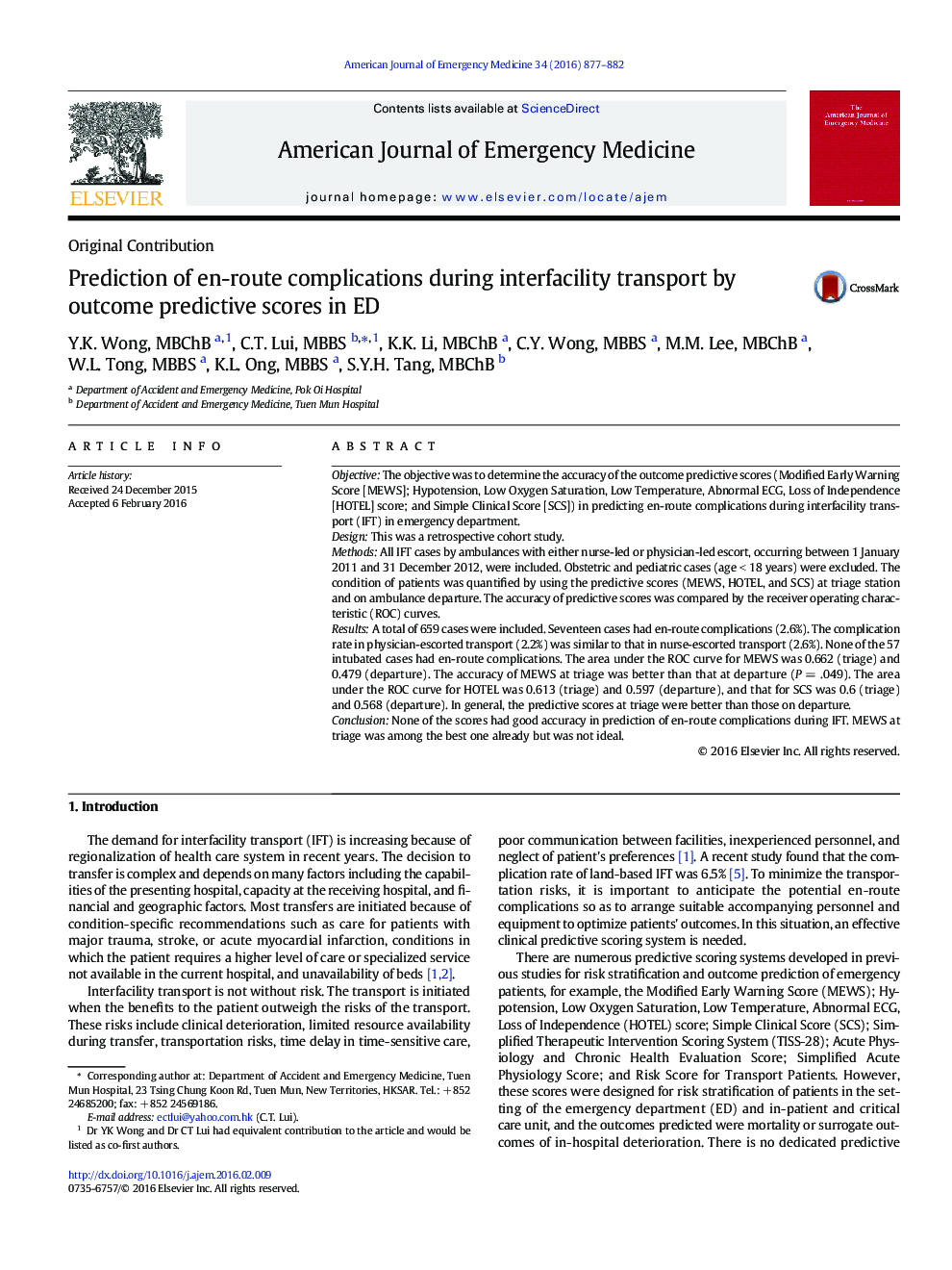| Article ID | Journal | Published Year | Pages | File Type |
|---|---|---|---|---|
| 3223305 | The American Journal of Emergency Medicine | 2016 | 6 Pages |
ObjectiveThe objective was to determine the accuracy of the outcome predictive scores (Modified Early Warning Score [MEWS]; Hypotension, Low Oxygen Saturation, Low Temperature, Abnormal ECG, Loss of Independence [HOTEL] score; and Simple Clinical Score [SCS]) in predicting en-route complications during interfacility transport (IFT) in emergency department.DesignThis was a retrospective cohort study.MethodsAll IFT cases by ambulances with either nurse-led or physician-led escort, occurring between 1 January 2011 and 31 December 2012, were included. Obstetric and pediatric cases (age < 18 years) were excluded. The condition of patients was quantified by using the predictive scores (MEWS, HOTEL, and SCS) at triage station and on ambulance departure. The accuracy of predictive scores was compared by the receiver operating characteristic (ROC) curves.ResultsA total of 659 cases were included. Seventeen cases had en-route complications (2.6%). The complication rate in physician-escorted transport (2.2%) was similar to that in nurse-escorted transport (2.6%). None of the 57 intubated cases had en-route complications. The area under the ROC curve for MEWS was 0.662 (triage) and 0.479 (departure). The accuracy of MEWS at triage was better than that at departure (P = .049). The area under the ROC curve for HOTEL was 0.613 (triage) and 0.597 (departure), and that for SCS was 0.6 (triage) and 0.568 (departure). In general, the predictive scores at triage were better than those on departure.ConclusionNone of the scores had good accuracy in prediction of en-route complications during IFT. MEWS at triage was among the best one already but was not ideal.
